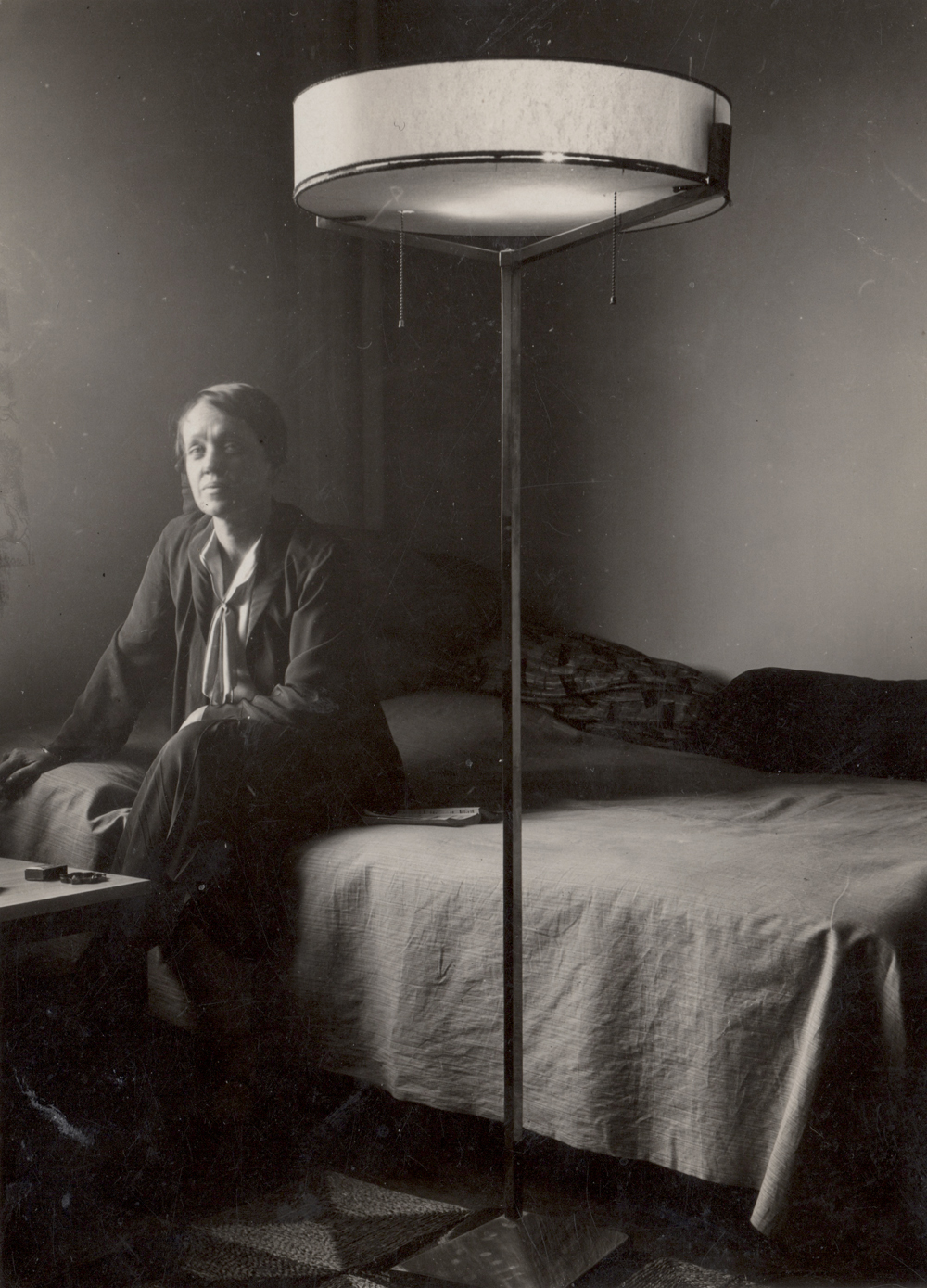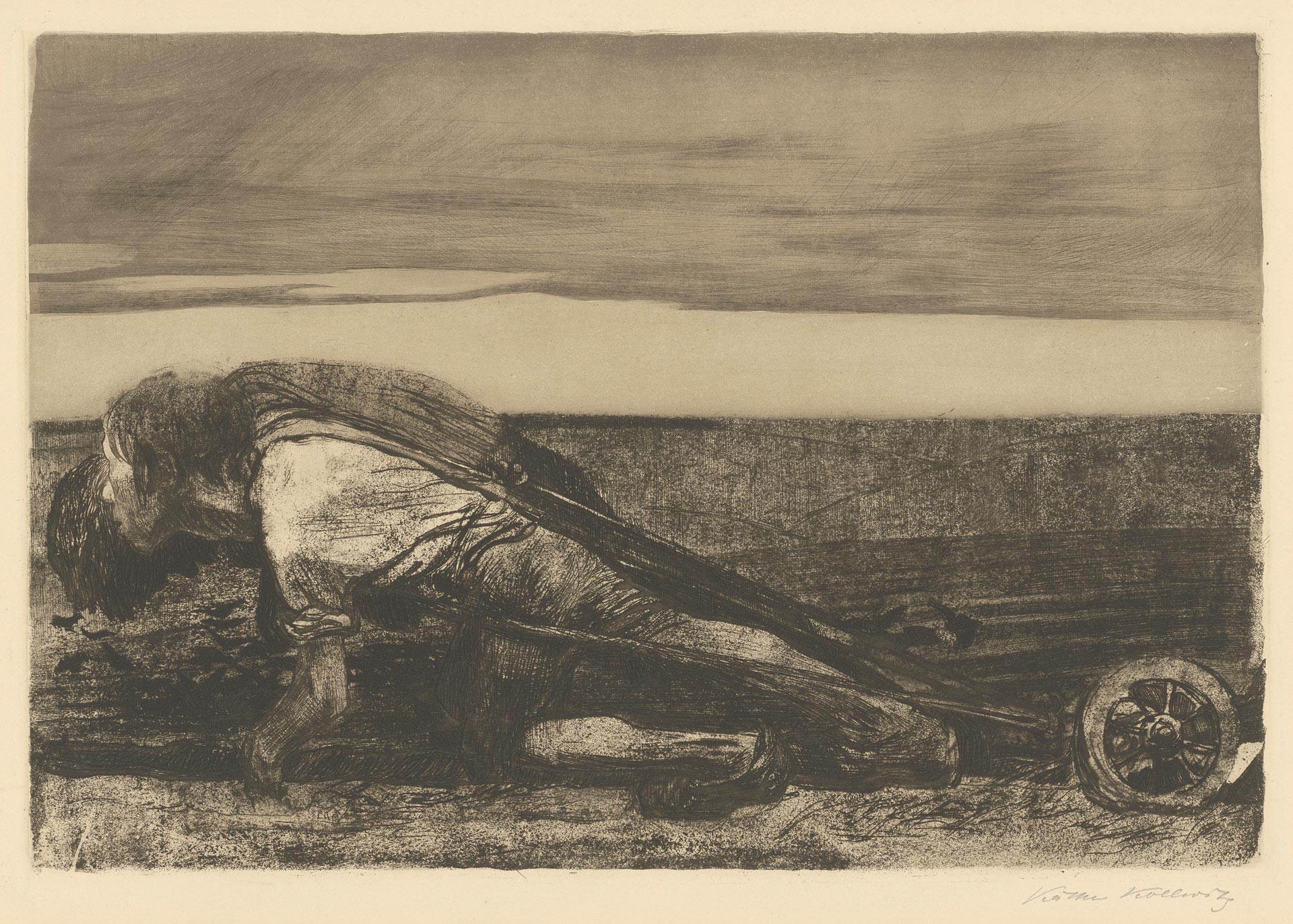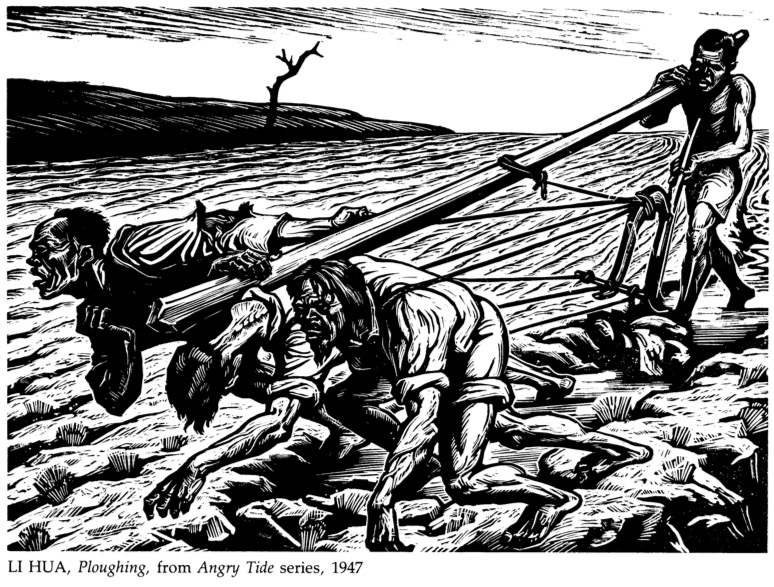Archive
Exhibition of prints by Käthe Kollwitz
Exhibition of prints by Käthe Kollwitz
Word Count: 7
- Exhibition of prints by Käthe Kollwitz
- Exhibition
- 06-1931
A German woodcut exhibition organised at the Zeitgeist Bookstore presumably took place in June 1931. In June 1932. A further exhibition with more than 200 works by German artists, including works by Käthe Kollwitz and George Grosz, was shown at the Chinese Y.M.C.A.
Word Count: 44

Advertisement for the Zeitgeist Bookstore. 
Agnes Smedley in her apartment with a lamp designed by Rudolf Hamburger, photography, 1931 (© Hamburger family). 
Käthe Kollwitz, The Ploughmen, sheet 1 of the cycle “Peasants War”, 1907, line etching, drypoint, aquatint, reservage, sandpaper, needle bundle and soft ground with imprint of Ziegler's transfer paper, Kn 99 VIII b. (© Käthe Kollwitz Museum Köln). 
Smedley, Agnes. “Chinese Woodcuts 1935–49.”, The Massachusetts Review, vol. 25, no. 4, 1984, p. 553. Reprint of Li Hua, Ploughing, Angry Tide series, 1947. 5_ Ye Qianyu, cover print, The Second-class Rail Carriage, Modern Sketch, July 1935. The print was inspired by George Grosz. 
Wang Guodong, cover print, Pornographic behaviour under the blue sky and red sun, Modern Sketch, February 1936. The print was inspired by George Grosz’ sketch The Kiss. 
Ye Qianyu, cover print, The Second-class Rail Carriage, Modern Sketch, July 1935. Smedley, Agnes. "Chinese Woodcuts 1935–49." The Massachusetts Review, 1984, vol. 25, no. 4, 1884, pp. 553–564.
Smedley, Agnes. "The Chinese Woodcut: Eleven Prints of Life and Manners in Present Day China." Tribune Gallery, New York, 1949.
Danzker, Jo-Anne Birnie, et al. Shengtian (editors).Shanghai Modern 1919– 1945, Hatje Cantz Verlag, 2004.
Lu, Hsun [Lu Xun]. "Written in Deep Night." Voice of China, vol. 1, no. 6, 1 June 1936, p. 6.
Werner, Ruth. Sonjas Rapport, Verlag Neues Leben, 2006.
Bevan, Paul. 'Intoxicating Shanghai’ – An Urban Montage. Art and Literature in Pictorial Magazines during Shanghai’s Jazz Age. Brill, 2020.Word Count: 82
Zeitgeist Bookstore, 130 North Suzhou Road (now Bei Suzhou Lu, Hongkou Qu); Chinese Y.M.C.A., Boulevard de Montigny, French Concession (now 123 Xizang Nan Lu, Huangpu Qu), American Women’s Club, 113 Bubbling Well Road, International Settlement (now Nanjing Xi Lu, Jing’an Qu) Shanghai
- Shanghai
- Eduard Kögel. "Exhibition of prints by Käthe Kollwitz." METROMOD Archive, 2021, https://archive.metromod.net/viewer.p/69/2952/object/5141-11304831, last modified: 14-09-2021.
-
David Ludwig BlochArtistShanghai
David Ludwig Bloch is known for his paintings and watercolours revolving around the Holocaust and his exile. With the woodcuts from his time in exile in Shanghai, Bloch created an artistic account of everyday life in the city, while harvesting the simplicity of form and colour of the medium.
Word Count: 49
Richard PaulickArchitectDesignerShanghaiAfter studying with Hans Poelzig, Richard Paulick worked in Walter Gropius’s office and frequented the Bauhaus in Dessau before emigrating to Shanghai in 1933. After his return, he became an influential planner and architect in the GDR, from 1950 until his retirement
Word Count: 41
Agnes SmedleyWriterJournalistShanghaiAgnes Smedley was an American journalist, writer and activist. Between 1929 and 1941, she lived in China, where she wrote reportages for European and American newspapers. As a feminist and socialist writer, she focused on the concerns of rural people and paid special attention to artists and their work during the Chinese revolution.
Word Count: 51